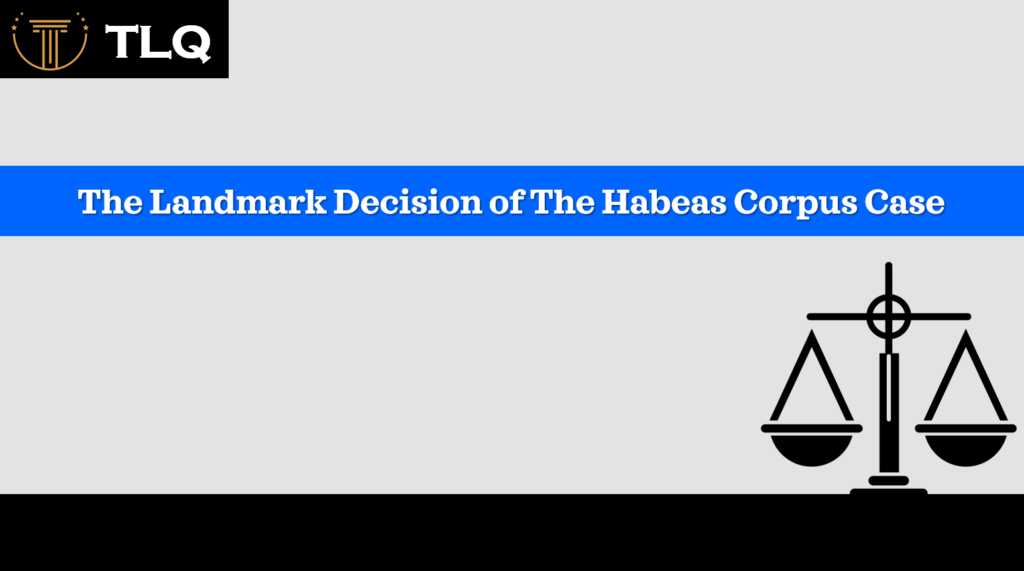Published on 14th February 2025
Authored By: Anika Agarwal
University of Petroleum and Energy Studies
Introduction
The Kesavananda Bharati case is one of the landmark judgments delivered by the Supreme Court in history. When it is termed a landmark judgment, it means that it establishes new legal principles that affect the law and society. It revolved around the principle of the basic structure of the Constitution. It was also headed by a bench of 13 judges, thus making it the largest bench of the Supreme Court and in constitutional history. This case can also be called a ‘Fundamental Rights Case’. In a 7:6 majority by Supreme Court finally ruled that the government does not have absolute power to amend the Constitution. Certain key features like basic fundamental rights of the Constitution, such as democracy, secularism, and the rule of law cannot be amended by the government. The history of this case is linked to various other cases as well. The facts, issues, rules, analysis, and conclusion of the case are outlined below.
Facts
The facts date back to 1972 when the case was heard for the first time. The root of this case is the Land Reforms which were introduced by the government of Kerala in the 1950s and 1960s. These reforms focused on land redistribution. The land from large landowners was redistributed to the landless and the poor. Gradually, the State Government enacted the Kerala Land Reforms Act in the year 1963. This act placed a limit on the amount of land that a person could hold. In other words, this is termed as Land Ceiling which means the maximum land holdings that an individual can hold. Therefore, through this act, the land was acquired from the large landowners and distributed among the landless and the poor. Sri Kesavananda Bharati was the head of the Edneer Mutt, a Hindu religious institution in Kerala, India. In the year, 1970, the state governmentimposed restrictions on the ownership of land that religious institutions could hold. Sri Kesavananda Bharati, who represented The Edneer Mutt challenged the constitutionality of the Kerala Land Reforms Act in the Kerala High Court. The Kerala High Court ruled in favor of the state government and hence the case eventually reached the Supreme Court of India.
When the case reached the Supreme Court of India, in the meantime, the parliament passed the 24th Amendment Act. This amendment act affirmed the power of the parliament to amend any part of the constitution including the fundamental rights. The 24th Amendment Act came into force on 5th November 1971. After the 24th Amendment Act, the parliament didn’t take much time for the 25th and 29th Amendment Acts. The latter aforementioned acts give parliament the power to amend the constitution and curtail the power of fundamental rights. A petition was filed by Sri Kesavananda Bharati in the Supreme Court which challenged the constitutional validity of these amendments. He argued that it violated the basic structure of the constitution. Therefore, this case was brought to the limelight in the Indian Judiciary because it was this case that challenged the basic structure of the constitution.
Issues
The Supreme Court penned down certain issues. The primary legal issue was-
‘Whether the Fundamental Rights could be amended under Article 368 of the Constitution?’
The other key issues were
- Constitutional validity of the Kerala Land Reforms Act.
- The extent of the Parliament’s power to amend the constitution.
- The doctrine of basic structure of the constitution.
Rule
Since the primary legal issue before the Supreme Court of India was the basic structure doctrine, Article 368 became very prominent in the discussion. Article 368 of the Indian constitution lays down the “Power of Parliament to amend the Constitution and procedure therefor”.
Other Rules of Law that were applicable in the aforementioned case law were the 24th, 25th and 29th Amendment Acts. Article 368 of the Indian Constitution gives power to the parliament to amend the constitution. But in the instant case, the petitioner challenges its validity. The question revolves around the same fact of whether the parliament has the power to amend the basic structure of the constitution. Hence, Article 368 becomes important in discussion. Also, the petition was filed under Article 32 of the Indian Constitution, 1950 which is one of the fundamental rights granted to the citizens of India. It allows the citizens to directly approach the Supreme Court if they feel that their fundamental right has been violated. The petitioner moved to the Supreme Court for enforcement of his fundamental rights under Articles 25, 26, 14, 19(1)(f) and 31 of the Indian Constitution, 1950.
Other amendment acts are mentioned below-
24th Amendment Act, 1971- This amendment act allowed the parliament to amend any part of the constitution inclusive of the fundamental rights. The act also made it compulsory for the President to give consent for the amendment bill.
25th Amendment Act, 1972- This amendment act curtailed the power of the earlier Article 31 of the Indian Constitution. The Fundamental right to property was no longer a fundamental right and the word ‘compensation’ was substituted with ‘amount’.
29th Amendment Act, 1972- Through this amendment, the parliament inserted the Kerala Land Reforms (Amendment) Act, 1969 and the Kerala Land Reforms (Amendment) Act, 1971 in the 9th Schedule of the constitution of India.
Arguments and Analysis
The petitioner contended that the parliament cannot amend the constitution according to its whims and fancies. The argument was mainly that the parliament does not have absolute power to amend the constitution. The power comes with certain restrictions as there are chances that it can be misused. It was also argued that the 24th and 25th Amendments Act infringed the fundamental right of freedom of speech and expression. Further, it was contended that the power to amend the constitution given to the parliament is granted by the constitution itself with certain inherent limitations. On the other hand, the respondent contended that the basic principle of the Indian Legal System is the supremacy of the Parliament. This argument was contended based on the article 368 of the Indian Constitution. It was further argued that the word amend means to alter, modify, add, repeal, or abrogate any part of the constitution and hence no restrictions. Also, the state contended that Article 368 of the Indian Constitution does not specify explicitly or implicitly about inherent limitations.
Following these arguments, the researcher has come up with the analysis mentioned below.
The case upheld the supremacy of the constitution. In my opinion, it was a case of judicial review. Meaning, that this case granted the power to the court to examine the three aspects of the government- legislative, executive, and administrative arm, to check whether these actions are in consistent with the Constitution. Since it was based upon judicial review, the spirit of constitutionalism remained intact. The judiciary cannot interfere in the legislative and executive matters of the government. On the other hand, judicial activism is a challenge to the spirit of constitutionalism because it can lead to inconsistent decisions, violate the principle of separation of powers, and interfere with the democratic process. According to me firstly, the case broadly defines the power of the parliament to amend the constitution and secondly, it widens the scope and ambit of amending the constitution. Also, whether the procedure followed was constitutional or unconstitutional is a question of fact. I feel this can be a plausible question here because from the thirteen-judge bench, 7 judges were in favor but the other six were not in favor of the same. Therefore, the overall conclusion in my opinion could be that the power to amend the Constitution concerning fundamental rights cannot be considered with much confidence as with the other provisions. Also, neither the parliament’s obligations were hindered nor rights of the citizens were violated.
Conclusion
The decision of the case was passed on 24th April 1973 with a ratio of 7:6 ratio. Seven judges signed in favor but the six judges were not in favor. It was ruled that the parliament has power to amend the constitution but not its basic structure. So basically, it was concluded that the basic structure of the constitution cannot be amended. The fundamental rights are granted to the citizens and it can never be changed.




